Resident Crews of the International Space Station (ISS)
![]()
ISS: Expedition 62 |
 |
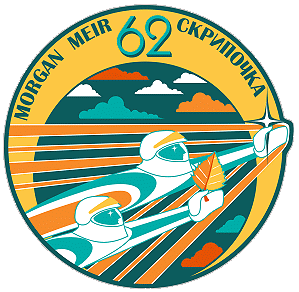 |
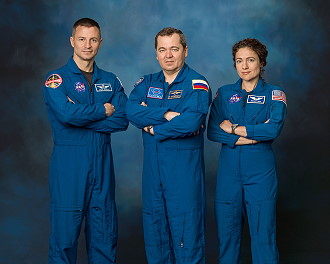 |
crew poster |
|
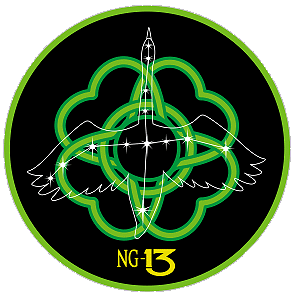 |
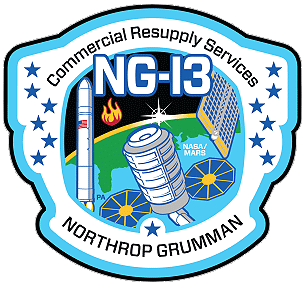 |
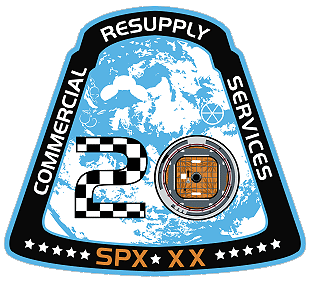 |
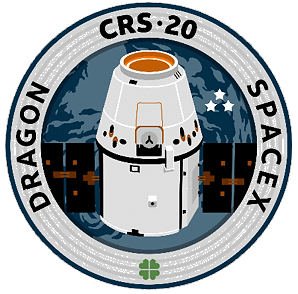 |
![]()
Crew, launch- and landing data
| No. | Nation | Surname | Given names | Position | Spacecraft (launch) |
Launch date |
Launch time |
Spacecraft (landing) |
Landing date |
Landing time |
Mission duration |
Orbits |
| 1 | Skripochka | Oleg Ivanovich | ISS-CDR | Soyuz MS-15 | 25.09.2019 | 13:57:42.701 UTC | Soyuz MS-15 | 17.04.2020 | 05:16:10.0 UTC | 204d 15h 18m 27s | 3280 | |
| 2 | Ivanishin | Anatoli Alekseyevich | Flight Engineer-1 | Soyuz MS-16 | 09.04.2020 | 08:05:06.463 UTC | Soyuz MS-16 | 22.10.2020 | 02:54:06.8 UTC | 195d 18h 49m 00s | 3136 | |
| 3 | Vagner | Ivan Viktorovich | Flight Engineer-2 | Soyuz MS-16 | 09.04.2020 | 08:05:06.463 UTC | Soyuz MS-16 | 22.10.2020 | 02:54:06.8 UTC | 195d 18h 49m 00s | 3136 | |
| 4 | Morgan | Andrew Richard | Flight Engineer-3 | Soyuz MS-13 | 20.07.2019 | 16:28:20.238 UTC | Soyuz MS-15 | 17.04.2020 | 05:16:10.0 UTC | 271d 12h 47m 50s | 4353 | |
| 5 | Cassidy | Christopher John "Chris" | Flight Engineer-5 | Soyuz MS-16 | 09.04.2020 | 08:05:06.463 UTC | Soyuz MS-16 | 22.10.2020 | 02:54:06.8 UTC | 195d 18h 49m 00s | 3136 | |
| 6 | Meir | Jessica Ulrika "Goose" | Flight Engineer-9 | Soyuz MS-15 | 25.09.2019 | 13:57:42.701 UTC | Soyuz MS-15 | 17.04.2020 | 05:16:10.0 UTC | 204d 15h 18m 27s | 3280 |
unofficial Backup Crew
| No. | Nation | Surname | Given names | Position |
| 1 | Ryzhikov | Sergei Nikolaevich | ISS-CDR | |
| 2 | Ryzhikov | Sergei Nikolaevich | Flight Engineer | |
| 3 | Babkin | Andrei Nikolayevich | Flight Engineer | |
| 4 | Flight Engineer | |||
| 5 | Bowen | Stephen Gerard | Flight Engineer | |
| 6 | Marshburn | Thomas Henry "Tom" | Flight Engineer |
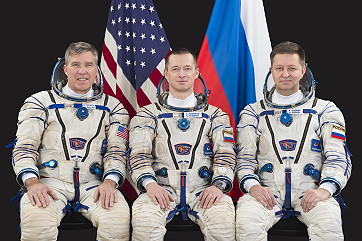 |
|
 |
Expedition Report
|
ISS Expedition 62 began with the undocking of Russian
spacecraft Soyuz
MS-13 on February 06, 2020 at 05:50:28
UTC. The landing crew consisted of Aleksandr
Skvortsov, Luca
Parmitano and Christina
Koch. Three-and-a-half-hours later the crew landed safely in
Kazakhstan. So, the new Expedition 62 consisted of
ISS Commander Oleg
Skripochka, Jessica
Meir
(both had reached the station onboard
Soyuz MS-15)
and Andrew
Morgan (since the docking of
Soyuz MS-13
onboard). On February 15, 2020 at 20:21:04.9 UTC Northrop Grumman launched its Cygnus NG-13 ("S.S. Robert H. Lawrence") spacecraft loaded with approximately 8,000 pounds (3,628 kg) of research, crew supplies, and hardware on an Antares rocket from the Mid-Atlantic Regional Spaceport's Pad-0A. The freighter is named after the late MOL astronaut Robert H. Lawrence, Jr. who died on December 08, 1967, in an F-104 air crash at the Edwards AFB. He was the first colored astronaut selected on June 30, 1967 for the MOL (Manned Orbiting Laboratory) program of the USAF. Each resupply mission to the station delivers scientific investigations in the areas of biology and biotechnology, Earth and space science, physical sciences, and technology development and demonstrations. Highlights of space station research that will be facilitated by research aboard this Cygnus mission include: The Mobile SpaceLab, a tissue and cell culturing facility that launches and returns on space station resupply spacecraft to offer researchers a quick-turnaround, high-throughput platform that can perform a biology experiment without the need for crew operations for as long as a month. Plant Habitat-02, which will cultivate radishes in the Advanced Plant Habitat facility as a model plant that is nutritious and edible. The ability to reliably grow nutritionally-valuable food crops in space which will be critical for NASA's human exploration of the Moon and Mars. The Spacecraft Fire Experiment-IV (Saffire-IV) investigation, which will use the Cygnus resupply vehicle after it leaves the space station to examine the development and growth of a fire in different materials and environmental conditions. Understanding how fires spread in space is vital for developing flame-resistant materials and fire prevention measures. Northrop Grumman used a new 24-hour late load capability on this mission. This innovative system includes a mobile clean room and a removable portion of the payload fairing that will permit time-sensitive science experiments to be loaded into Cygnus as late as 24 hours before liftoff. The Cygnus spacecraft arrived at the space station on February 18, 2020 at 09:05 UTC Expedition 62 astronaut Andrew Morgan grappled the spacecraft using the station's robotic arm. He was backed up by astronaut Jessica Meir. After Cygnus capture, ground controllers commanded the station's arm to rotate and installed Cygnus on the Earth-facing port of the station's Unity module (11:16 UTC). The Cygnus spacecraft is scheduled to remain at the space station until May 11, 2020. The Saffire-IV experiment will be conducted within Cygnus after it departs the station, and prior to deorbit, when it also will dispose of several tons of trash during a fiery reentry into Earth's atmosphere May 25, 2020. Due to medical reasons former prime crew members of Soyuz MS-16 Nikolai Tikhonov and Andrei Babkin were replaced by the backup cosmonauts on February 19, 2020. NASA commercial cargo provider SpaceX launched its 20th commercial resupply services mission to the International Space Station at 04:50:31 UTC on March 07, 2020. Loaded with 4,358 pounds (1,977 kilograms) supplies and critical materials to directly support dozens of the more than 250 science and research investigations that will occur during Expeditions 62 and beyond, the SpaceX Dragon spacecraft (CRS-20 or SpX-20) launched on a Falcon 9 rocket from Space Launch Complex 40 at Cape Canaveral Air Force Station (CCAFS) in Florida. In addition to bringing research to station, the Dragon's unpressurized trunk will transport ESA's (European Space Agency) Bartolomeo or CEPHFISS (Commercial External Payload Hosting Facility On ISS), a new commercial research platform set to be installed on the exterior of the orbiting laboratory. The Bartolomeo platform, named after the younger brother of Christopher Columbus, will be installed outside the front of the Columbus laboratory, 400 km above the earth. Users will have 10 Gbps data downlink capacity, enough to download an HD movie within 30 seconds. The format for the payload is flexible. Users can reduce it to 5 kg by sharing the slot with other experiments, or they can have an entire slot weighing up to 450 kg. Bartolomeo provides eleven slots. The waiting time between the moment the contract is signed and the green light for the flight is one to two years - much less than the standard waiting time for experiments. The rental agreement for space is at least one year. Earth observation and telecommunications, exobiology and space weather research are fields of great demand that will benefit. Dragon reached its preliminary orbit about 10 minutes after launch. It then deployed its solar arrays and began a carefully choreographed series of thruster firings to reach the orbiting laboratory two days later on March 09, 2020. When Dragon CRS-20 or SpX-20 arrived, Jessica Meir and Andrew Morgan (acting as a backup) grappled Dragon (10:25 UTC). The station crew monitored telemetry during Dragon's approach. After Dragon's capture, ground controllers sent commands from mission control in Houston for the station's arm to rotate and install the spacecraft on the bottom of the station's Harmony module (12:18 UTC). The Dragon spacecraft will spend about four weeks attached to the space station. Dragon will remain at the orbital outpost until April 06, 2020, when the spacecraft will return to Earth with research and return cargo. On March 19, 2020 an ISS reboost was performed using Progress MS-13 thrusters. This reboost was to set up for the landing of manned spacecraft Soyuz MS-15 and the launch of Soyuz MS-16 in April 2020. The engines started at 17:14 UTC and fired 534 seconds. The ISS got 0.6 m/sec. more speed. The actual parameters are 416.68 km x 439.57 km. The ISS needs 92.88 minutes for each orbit. On April 02, 2020 a second ISS reboost was performed using Progress MS-13 thrusters. This reboost was to set up for the launch of unmanned spacecraft Progress MS-14 in April 2020. The engines started at 12:41 UTC and fired 427.5 seconds. The ISS got 0.48 m/sec. more speed. The actual parameters are 419.3 km x 440.9 km. The ISS needs 92.92 minutes for each orbit. Europe's latest contribution to the orbiting lab, Bartolomeo, was attached to the outside of the Columbus laboratory module on April 02, 2020. Robotic engineers remotely commanded the Canadarm2 robotic arm and the Dextre robotic hand and completed the fine-tuned installation work over two days. Bartolomeo, delivered in March 2020 aboard the SpaceX Dragon cargo craft, gives private and institutional researchers the ability to command and control science payloads outside the space station. Filled with more than 4,000 pounds (1,814 kg) of valuable scientific experiments and other cargo, SpaceX Dragon SpX-20 or CRS-20 resupply spacecraft left the International Space Station on, April 07, 2020. Robotic flight controllers at mission control in Houston sent at 13:06 UTC commands to release Dragon using the station's Canadarm2 robotic arm. Expedition 62 Flight Engineer Andrew Morgan monitored Dragon's systems as it departed the orbital laboratory. Dragon fired its thrusters to move a safe distance from the station, then executed a deorbit burn as it heads for a parachute-assisted splashdown around 18:50 UTC in the Pacific Ocean, southwest of Long Beach, California. Some of the scientific investigations Dragon returned to Earth include: Generating a nutritional meal: Planning ways to supply food for a multi-year mission on the Moon or Mars may require making food and nutrients in space. BioNutrients demonstrates a technology that enables on-demand production of nutrients needed during long-duration space missions. Although designed for space, this system also could help provide nutrition for people in remote areas of our planet. Toward printing human organs in space: Biological printing of the tiny, complex structures found inside human organs, such as capillaries, is difficult in Earth's gravity. The BioFabrication Facility (BFF) attempts to take the first steps toward the printing of human organs and tissues in microgravity. The facility may also help maintain the health of crews on deep space exploration missions by producing food and personalized pharmaceuticals on demand. Helping the heart: The Engineered Heart Tissues (EHTs) study looks at how human heart tissue functions in space. It uses unique 3D tissues made from heart cells derived from human induced Pluripotent Stem Cells (hiPSCs), essentially adult stem cells. Researchers expect significant differences in function, structure and gene expression between EHTs in microgravity and those on the ground. Understanding these differences could help them find ways to prevent or mitigate problematic changes on future long-duration missions. Biofilm festival: Samples from the Space Biofilms investigation, which examines microbial species and their formation of biofilms, are returning on Dragon. Biofilms are collections of one or more types of microorganisms - including bacteria, fungi and protists - that grow on wet surfaces. Better control of biofilms may help maintain crewed spacecraft and protect the health and safety of crew members as well as help prevent the introduction of Earth-based microbes to planetary bodies on which humans land. Following an only six-hours solo flight Soyuz MS-16 docked to ISS on April 09, 2020. Anatoli Ivanishin, Ivan Vagner and Christopher Cassidy became the ISS Expedition 62 (together with ISS Expedition 61 crew members Oleg Skripochka, Jessica Meir and Andrew Morgan). With the arrival Expedition 62 became a six-person-crew. Finally, the station command changed from Russian cosmonaut Oleg Skripochka to US astronaut Christopher Cassidy. ISS Expedition 62 concluded with the undocking of Russian spacecraft Soyuz MS-15 on April 17, 2020 at 01:53:30 UTC. The landing crew consisted of Oleg Skripochka, Jessica Meir and Andrew Morgan. Three-and-a-half-hours later the crew landed safely in Kazakhstan. So, the new Expedition 63 consisted of ISS Commander Christopher Cassidy, Anatoli Ivanishin and Ivan Vagner. Among the US experiments are: Mobile SpaceLab: The Mobile SpaceLab is a tissue and cell culturing facility that launches and returns on space station resupply vehicles to offer investigators a quick-turnaround, high-throughput platform to perform sophisticated microgravity biology experiments. The Mobile SpaceLab can perform a biology experiment autonomously for up to a month on the space station without the need for crew operations. Spacecraft Fire Experiment-IV: Understanding how fires spread in space is vital for developing flame-resistant materials and fire prevention measures, but it is difficult to perform flame growth and prevention experiments aboard a spacecraft. The Spacecraft Fire Experiment-IV (Saffire-IV) investigation uses the Cygnus resupply vehicle after it leaves the space station to examine fire growth in different materials and environmental conditions. It also demonstrates fire detection, monitoring and post-fire cleanup capabilities. Mochii: Mochii is a miniature scanning electron microscope that helps in rapid identification of particles found on the space station, many invisible to the naked eye. Such particles can cause vehicle and equipment malfunctions and threaten crew health, but currently, samples must be returned to Earth for analysis, leaving crew and vehicle at risk. Mochii also provides a powerful new analysis platform to support novel microgravity science and engineering. Bartolomeo: The European external platform Bartolomeo is an enhancement of the European Columbus Module, aiming to attract new European users to the space station, including a community of start-ups and space entrepreneurs. As companies piggyback off existing space station resources to reduce cost, new commercial opportunities will arise. Designed to meet user requirements from the commercial and institutional sector, Bartolomeo will provide affordable, quick and easy access to space for Earth observation and telecommunications, exobiology and space weather research. Droplet Formation Study: This project seeks to evaluate the water droplet formation, water flow, and, indirectly, the perceived pressure of Delta Faucet's current shower head technology versus the industry-standard use of jet nozzles. This study will examine droplet size and speed, and how they affect the feeling of increased pressure for the end user. The study will evaluate how best to control the output of water droplets to create a better performing shower device that provides an improved experience for the end user while also conserving water and energy. By conducting research in microgravity, Delta Faucet seeks to gain a better understanding of the upper limit of what can be achieved and determine if and how the technology can be improved. |
Photos
 |
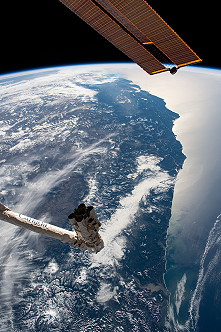 |
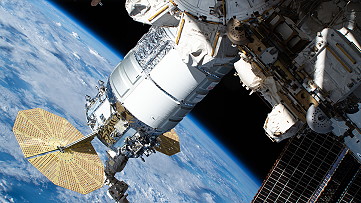 |
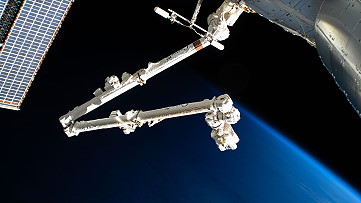 |
 |
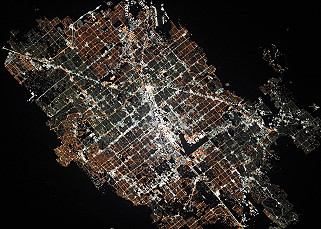 |
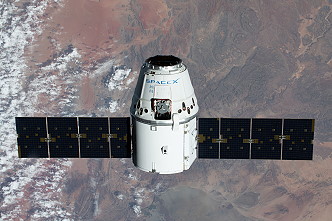 |
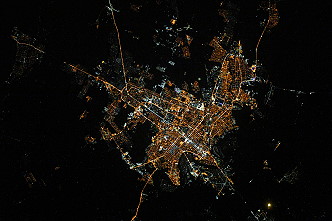 |
 |
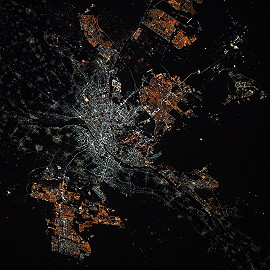 |
 |
 |
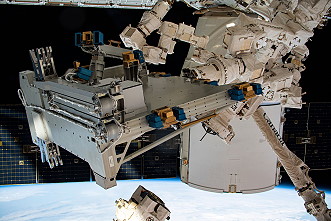 |
 |
more onboard photos |
|
more Earth observation photos |
|
| © |  |
Last update on November 11, 2023.  |
 |